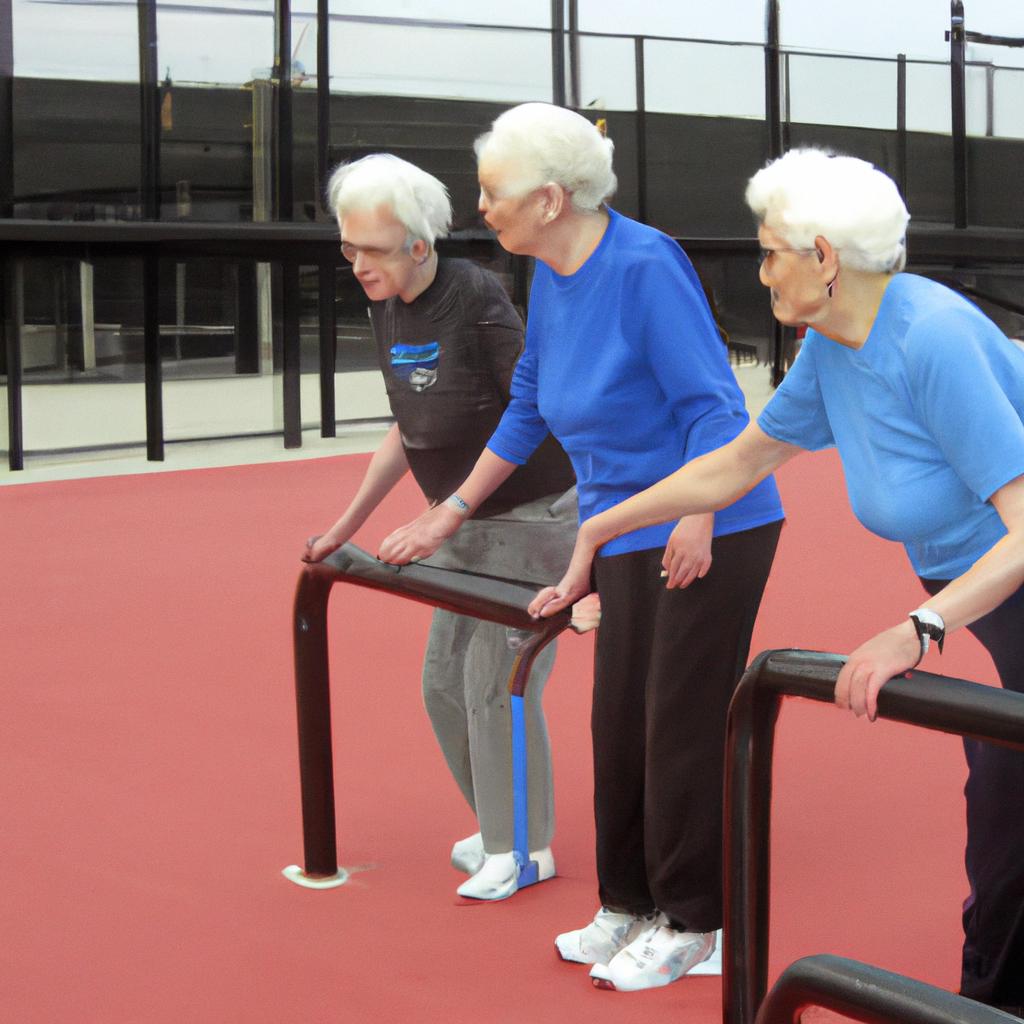**”Urban Fitness for All Ages: Designing Inclusive Workouts That Engage Seniors in City Environments”**
# Urban Fitness for All Ages: Designing Inclusive Workouts That Engage Seniors in City Environments
Urban environments offer a dynamic backdrop for fitness, yet they often overlook the specific needs of seniors seeking to maintain an active lifestyle. As cities become more populated and diverse, it is essential to create inclusive workouts that cater to individuals of all ages, particularly older adults. This blog post will explore how to design engaging fitness routines for seniors in urban settings, emphasizing the importance of accessibility, community, and tailored programs.
## Understanding the Urban Fitness Landscape
### The Importance of Inclusivity
Inclusivity in fitness means providing opportunities for everyone, regardless of age or physical ability. Urban areas are often bustling with energy, offering parks, community centers, and outdoor spaces that can be transformed into fitness hubs. However, many seniors may feel intimidated or excluded from traditional workout environments. By understanding their unique needs, we can create more welcoming and engaging fitness options.
### Challenges for Seniors in Urban Areas
Seniors face several challenges when it comes to urban fitness, including mobility issues, safety concerns, and a lack of tailored programming. Accessibility to workout spaces and programs is crucial; many older adults may not have the means or desire to travel long distances to reach a gym. Therefore, it’s vital to create fitness solutions that are not only physically accessible but also promote a sense of community and belonging.
## Designing Inclusive Workouts
### Group Classes and Social Engagement
One of the most effective ways to engage seniors in urban environments is through group classes that emphasize social interaction. Classes like chair yoga, tai chi in the park, or dance sessions tailored for older adults can provide both physical benefits and opportunities for socializing. These sessions should focus on fun and connection rather than competition, allowing participants to feel comfortable and supported.
### Outdoor Activities for All Fitness Levels
Urban parks and public spaces offer a plethora of opportunities for outdoor activities. Consider organizing walking groups, nature hikes, or gentle cycling sessions that are suitable for all fitness levels. These activities not only encourage physical movement but also allow seniors to enjoy the beauty of their surroundings while socializing with others.
## Nutrition Tips for Seniors
A well-rounded nutritional plan is essential for seniors to complement their fitness routines. Here are some key tips:
1. **Prioritize Hydration**: Older adults often have a reduced sense of thirst, leading to dehydration. Encourage drinking water throughout the day, especially before and after exercise.
2. **Focus on Nutrient-Dense Foods**: As metabolism slows, it’s vital to choose foods rich in vitamins and minerals. Incorporate fruits, vegetables, whole grains, lean proteins, and healthy fats into daily meals.
3. **Consider Smaller, Frequent Meals**: Smaller meals can help maintain energy levels and prevent digestive discomfort. Encourage seniors to eat balanced snacks throughout the day.
4. **Limit Processed Foods**: Processed foods can be high in sodium and unhealthy fats. Encourage seniors to opt for fresh, whole foods whenever possible.
## Exercise Advice for Seniors
### Start Slow and Build Momentum
For seniors new to exercise, it’s essential to start slowly and gradually increase intensity. A well-rounded program should include:
– **Aerobic Exercises**: Activities like walking or swimming can improve cardiovascular health and endurance.
– **Strength Training**: Light weights or resistance bands can help maintain muscle mass and bone density. Aim for two sessions per week.
– **Flexibility and Balance**: Incorporating stretching and balance exercises, such as yoga or tai chi, can enhance stability and reduce the risk of falls.
### Listen to the Body
Encourage seniors to listen to their bodies and adjust their workouts accordingly. If they experience pain or discomfort, modifications should be made. It’s also wise to consult with healthcare providers before starting any new fitness regimen.
## Health Benefits of Urban Fitness for Seniors
Engaging in regular physical activity offers a myriad of health benefits for seniors, including:
– **Improved Physical Health**: Regular exercise can lower the risk of chronic diseases such as heart disease, diabetes, and obesity.
– **Enhanced Mental Well-Being**: Physical activity is linked to reduced symptoms of anxiety and depression, promoting overall mental health.
– **Social Connectivity**: Participating in group activities can combat loneliness and foster a sense of community, which is crucial for emotional well-being.
– **Increased Longevity**: Regular exercise is associated with a longer, healthier life, allowing seniors to remain independent for longer.
## Conclusion
Designing inclusive workouts that engage seniors in urban environments is not just beneficial; it’s essential. By prioritizing accessibility, fostering community through group activities, and emphasizing the importance of nutrition and tailored exercise plans, we can create a healthier, more vibrant urban fitness culture that caters to individuals of all ages. Ultimately, when cities embrace inclusivity in fitness, they empower seniors to lead active, fulfilling lives.















Post Comment